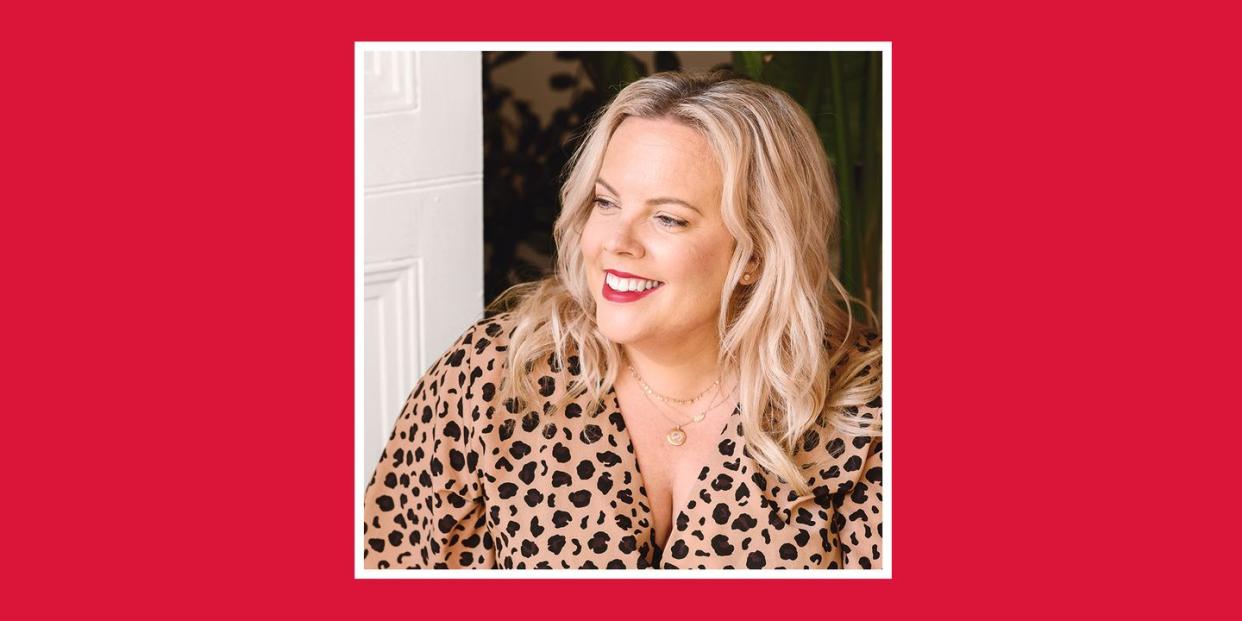This Woman Is Dedicating Her Life To Fighting Systemic Body Image Issues

Professor and image researcher Phillippa Diedrichs is determined to reframe the way we think about our appearance—and her work with some of the biggest brands in the world may do just that.
Growing up on Australia’s Sunshine Coast, I was surrounded by surf culture and sporty people. But you had to look a certain way to be considered athletic or beachy, and I didn’t fit the mold. Because of that, I didn’t feel comfortable in my body. It didn’t help that I never saw myself represented in media.
When I moved to Europe, my eyes were suddenly opened. On holiday in Greece and Italy, I’d observe women of all ages and body shapes on the beach. I’d see 70-year-old nonnas wearing bikinis—it was amazing.
I ended up studying psychology in college and thought I wanted to be a clinical psychologist, but I soon realized my true goal was to change the systems and environments that lead to body image issues.
I realized I could connect the science in the field of body diversity, which I was studying for my PhD, with thought leaders in media, beauty, fashion, fitness, and government policy to help people understand they don’t need to feel held back by the way they look.
I want people to celebrate and respect their bodies.
Today, I lead a team of researchers at the Centre for Appearance Research, which is based at the University of the West of England in Bristol. There are 18 of us, all young women, from various countries and different disciplines, whose work focuses on understanding how people are influenced to think and feel about the way they look. We use our findings to develop tools and programs.
A highlight of my career has been collaborating with Dove, Girlgaze, and Getty Images on Project #ShowUs, a collection of more than 10,000 images available to marketers and media companies to use in their content.
I also worked with Dove to bring an evidence-based body image acceptance program to the World Association of Girl Guides and Girl Scouts—the largest youth organization for girls in the world. To date, the program is in 142 countries, reaching more than 1 million adult volunteers and 10 million girls. That’s major impact.
Looking ahead, I’d like to continue to think creatively about how we reach young people with mental health tools and techniques. I want them to see appearance and beauty as something that can be fun and playful—a way to express identity.
These are some of the science-based tools Diedrichs uses to help others feel more comfortable in their own skin.
Body of work
Instead of focusing on what your body looks like, consider what it can do—what’s called “body functionality.” For example, if running brings you pleasure, be grateful that your body allows you to do that.
Back talk
Be aware of chatter that perpetuates unattainable beauty ideals. Saying something like “You look amazing. Have you lost weight?” may seem positive but sends a message that appearance is paramount. Always be conscious of the language you use with others—and yourself.
Facebook about-face
Cultivate an approach toward media intake that uplifts you. Think critically about what you’re consuming and creating on social media and question whether it makes you feel inadequate or inspired.
This article originally appeared in the November 2022 issue of Women's Health
You Might Also Like